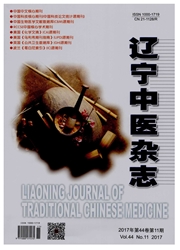

 中文摘要:
中文摘要:
目的:观察生肌玉红胶原的抑菌与调控创面金属蛋白酶而促进慢性创面愈合的作用机制。方法:采用试管法与平皿法实验以评估生肌玉红胶原强度,以大鼠感染性创面测定创面肉芽组织中羟脯氨酸、MMPs(MMP-1、MMP-2、MMP-9)含量,以电子照相法采用Image J软件分析测定创面面积。结果:生肌玉红胶原显著抑制外科临床常见细菌与耐药菌生长,对各种细菌的最小抑菌浓度为0.25 g/m L,抑菌范围为10.5-19.5 mm;在大鼠感染性慢性创面造模后3d起生肌玉红胶原显著抑制创面肉芽MMP1、MMP2及MMP9含量(P〈0.01),其中以MMP9表达影响疗效最显著;在造模后第7、15天生肌玉红胶原组创面羟脯氨酸含量显著高于对照组与胶原组(P〈0.05)。造模后第3-15天,生肌玉红胶原组创面面积显著小于对照组与胶原组(P〈0.05),造模后15 d,胶原组创面面积亦显著小于对照组(P〈0.05)。结论:生肌玉红胶原通过抑制外科临床常见细菌与耐药菌感染,降低创面金属蛋白酶分泌,促进肉芽羟脯氨酸合成而加速慢性创面愈合。
 英文摘要:
英文摘要:
Objective : To observe the effects of Shenji Yuhong Collagen on improving chronic wound healing through its functions of anti - bacteria and adjusting the expression of matrix metalloproteinases (MMPs). Methods : Tube method and plate method were applied to evaluate the degrees of bacteriostasis in vitro of Shenji Yuhong Collagen. The animal model of chronic wound was made by intramuscular injection of staphylococcus anreus on the back of SD rats and the contents of MMP1, MMP2, MMP9 and the hydroxyproline (Hyp) in the granulation tissue as well as the area of wounds were detected respectively. Results :The growth of surgical common bacteria and their respective drug - resistance were significantly inhibited with MIC of 0.25 g/mL and scope of bacteriostasis between 10.5 -19.5 mm by way of Sheriff Yuhong Collagen local application. The contents of MMP1, MMP2 and MMP9 in the experimental group( Shenji with Shenji Yuhong Collagen) were remarkably less than those of control group since day 3 (P 〈 0. 01 ), with the most differences happened on the expression of MMP9. The wound areas in experimental group was statis- tically smaller than those in the control group from day 3 to 15 (P 〈 0. 01 ). The contents of Hyp in the experimental group in- creased statistically on day 7 and 15 as compared with the results of control group. The wound areas in experimental group were statistically smaller than those in the control group from day 3 to 15 (P 〈 0. 01 ). Conclusion:Shenji Yuhong Collagen promotes chronic wound healing which may through inhibiting the surgical bacteria and their drug resistance and following by down regula- tion of MMPs expression with improving synthesis of collagen.
 同期刊论文项目
同期刊论文项目
 同项目期刊论文
同项目期刊论文
 期刊信息
期刊信息
